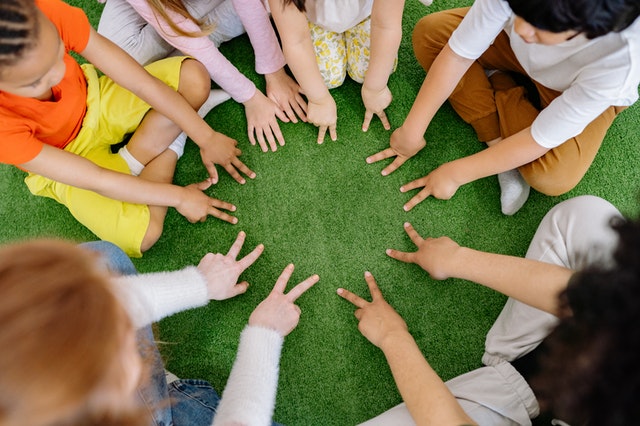
The Impact of Small Group Instruction on Student Connection
I can still feel the anxiety I felt when I looked at the class roster for my 1:10 pm class and saw 48 student names listed. And that was in 1999. Due to an issue with the master schedule I spent my first year of teaching with a mostly normal teaching schedule except for that dreaded 1:10 pm block.
48 students.
And those 48 students had different needs, different interests, and, in the case of this particular class, 4 different primary languages spoken at home. It was, to say the least, a recipe for disaster.
And so it was, in my first year as an underprepared teacher for any classroom, especially such a large one, that I first experimented with small group instruction. I didn’t do it well; but I was able to see its impact quickly. Putting my students into small groups was….magic.
The impact of small groups on student learning
Multiple studies have demonstrated the positive impact on students of small group instruction. The use of reading groups has been a common practice in elementary schools for a long time, with evidence demonstrating that placing students in small groups with students reading at similar levels supports student learning. Following on successes in small group instruction in literacy, schools began to use this practice in math as well, and often found similar results. Tiered support systems, such as RTI, recognize this and use small group instruction strategies to accelerate learning for all students. High dosage tutoring, which is defined as 1:1 or small group, has also shown to have positive impacts on student learning. The list of reasons to consider and encourage teachers to implement small group instruction is long and perhaps even longer when you ensure that the groups are not only small, but also differentiated.
How small groups facilitate connection
Less studied, but not less important, is the impact of small groups on not only students’ ability to learn and master content, but also their ability to connect with each other. Prior to the Covid-19 pandemic we saw a rise in interest in social-emotional learning (SEL) in districts across the country. Teachers and leaders saw an increasing need to focus on the “whole child” and developed a deeper understanding of the ways in which a student’s emotional and mental well-being might impact their academic success. Since the pandemic started to impact schools nearly two years ago, the need to support students, and recognition that this is important, has exploded. We know that students need us more than ever, and are all working to determine how we can provide them with that support. Facilitating more small groups should be near the top of that list.
In smaller groups students are able to build more connections to each other as well as deeper connections to their teacher. Whether the small groups are based on shared needs (often academic), shared interests (sports, arts, books etc), or simply getting kids out of the typical 32 student classroom format and into something smaller, these groups become safer spaces. They are less overwhelming for introverted students and easier to focus on share of voice. They are more engaging and it is often easier for students to focus in small groups, as well as for the teacher to be aware of who they might have lost along the way and bring those students back.. Small groups can be opportunities for students to be more authentic, for students to connect with and work with others they might not otherwise sit with in the lunchroom or talk to in the hallway. They are chances for students and teachers to come together in a way that is so normal in real life, but that is less common in the classrooms.
Small group instruction on Outschool
At Outschool all of our classes are small group because we believe so much in the power of learning that is social and engaging. We know group size and individual engagement are often inversely related and that with each incremental student, engagement often decreases. We know that when students get to know each other and their teachers, they are able to make connections that often fill holes in their lives. Online and in small groups they can be themselves and be celebrated for that – either because they find themselves in a group of like-minded and similar people or because they find themselves in a new setting where everyone’s uniqueness is what makes the group special.
During those months in 1999 I used small groups to make it more engaging, more fun, more meaningful and more manageable but at the end of the day, I still had 48 students all sitting in my room. Now Outschool offers, and many great brick and mortar teachers design, small group experiences for kids so they can both learn and connect more. Would you like to learn how Outschool can support your school with small group classes? Request a demo today.


